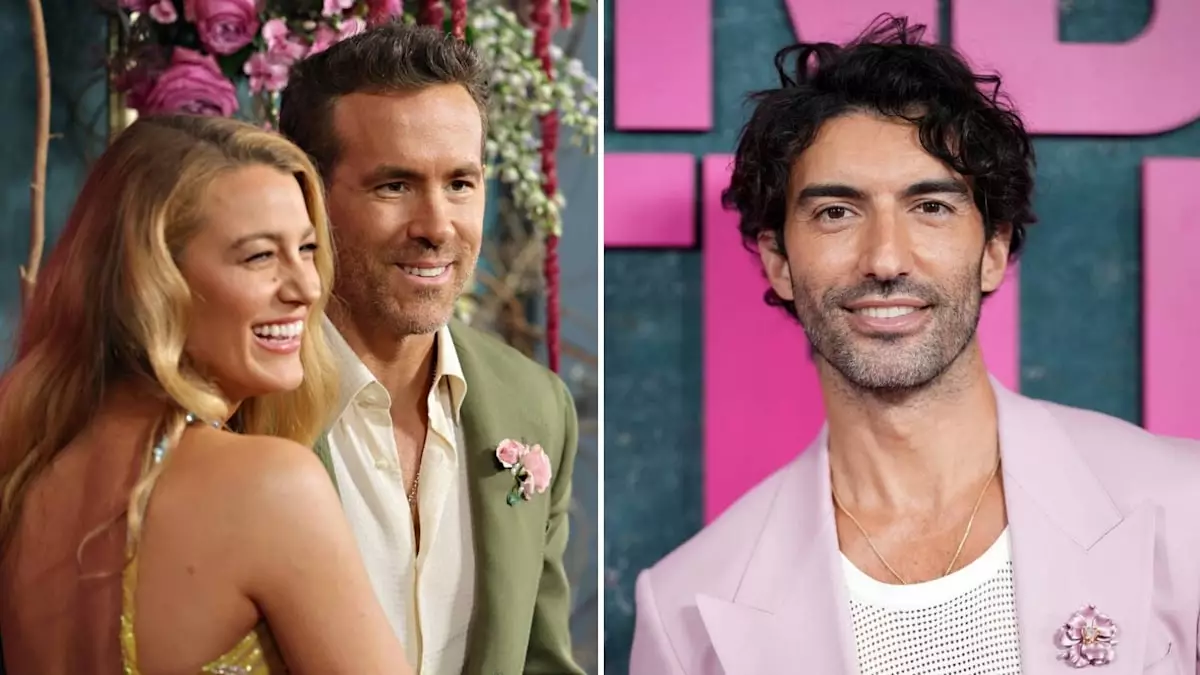In the ever-sensational world of Hollywood, legal disputes often escalate into public spectacles that captivate audiences. The ongoing legal battle between actor Justin Baldoni and actress Blake Lively has become a hotbed of controversy, complete with allegations, counter-allegations, and a burgeoning narrative that has taken both fans and followers by storm. As both parties enter a new chapter in their confrontation, recent disclosures involving a dedicated website launched by Baldoni has shed light on the intricate web of claims and events that have fueled this dispute.
Launching a website titled “Lawsuit Info,” Baldoni’s legal team has made significant moves to publicize their version of events, showcasing two pivotal documents: the “Amended Complaint” and the elaborately detailed “Timeline of Relevant Events.” The latter is particularly telling, spanning from January 2019, when Baldoni first approached author Colleen Hoover regarding the adaptation of her bestselling novel *It Ends With Us*, to January 29, 2025, when the lawsuit was officially filed against The New York Times. This timeline asserts that Baldoni believes there has been a conspiring effort on the part of Lively and her husband, Ryan Reynolds, in conjunction with the media, to undermine his position and the film’s reception.
Within the vast resources presented on the website, a multitude of purported text exchanges between Baldoni and the Lively-Reynolds duo serve as a centerpiece of the claims. In these exchanges, Baldoni seeks to express mutual respect prior to the film’s production, a tone that sharply contrasts with the unfolding saga characterized by public disagreements and apparent professional fallout. This narrative raises questions about the authenticity of relationships in a high-stakes industry where artistic integrity often clashes with commercial viability.
The timeline also encapsulates a pattern of professional distancing, highlighted by both Hoover and other cast members unfollowing Baldoni on social media. Such actions amplify the perception of a rift, expertly fueled by diverging promotional narratives and conflicting public statements. As audiences feast upon the drama, the question arises: can any semblance of artistic collaboration survive such public turmoil?
One of the most gripping aspects of this legal drama is a statement allegedly drafted by Lively and Reynolds, urging Baldoni to embrace accountability for the subpar reception of the film. This document reflects a palpable sense of frustration, arguing that Baldoni’s marketing strategies unintentionally positioned them in a negative light. It reads, “IT ENDS WITH US was a troubled production which we take full accountability for,” amplifying how the film’s creators feel the weight of public scrutiny.
This statement encapsulates the volatile dynamics of modern filmmaking, where reputations can shift in real-time, influenced by social media and public opinion. The very act of pulling publicity in separate directions speaks to the protective instincts of all parties involved, making it harder to discern where artistic expression ends and self-preservation begins.
As the court date looms on March 9, 2026, questions surrounding the outcome of this feud occupy the minds of many. The ambiguity surrounding key relationships, the tension between creative integrity and personal branding, and the broader implications for the film industry make this legal battle a fascinating case study.
With the addition of further public relations attacks and counterattacks, it is likely that we will continue to witness a story rich in layers and complexities. The legal maneuverings will yield insights not only into the individuals involved but also into the underlying culture that shapes Hollywood today. Ultimately, this saga serves as a cautionary tale about the pitfalls of fame and the potential consequences when personal and professional boundaries become entangled.
In the end, the legal drama between Justin Baldoni and Blake Lively is more than a mere conflict between two stars; it symbolizes the larger struggles of an industry grappling with the intersections of art, publicity, and accountability. As we await further developments, one thing remains certain: the narrative is far from over, and the revelations yet to come will continue to fuel discussions within and outside Hollywood.

